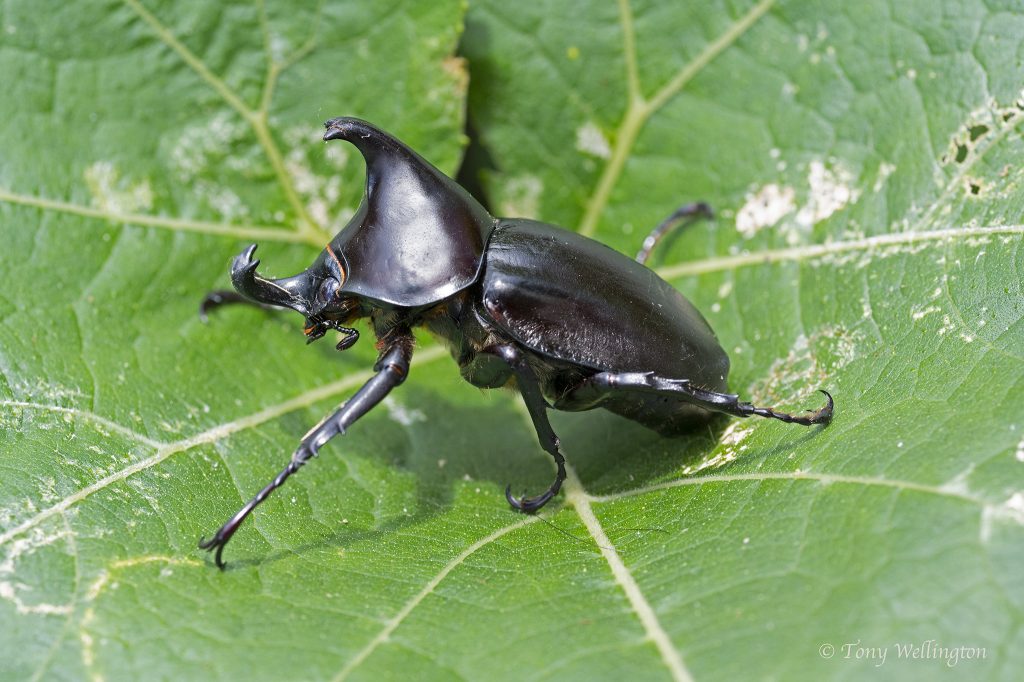What’s the strongest creature in the world? The gorilla I hear you suggest? Or perhaps the elephant, or maybe even the humble ant? Nope, it’s the Rhinoceros Beetle. They are reportedly capable of lifting 850 times their own body weight, which is the equivalent of a human lifting around 6 loaded buses.
Male Common Rhinoceros Beetles look prehistoric and fierce, with massive pincer-like horns. One protrudes from the top of the thorax and the other is actually an extension of the head. Each horn has a fork at the end, making it seem even more ferocious. However, they can’t bring those horns together, and nor can they sting or bite. When you pick up a Rhinoceros Beetle, they make a delightful, irritated noise – a sort of grating, hissing sound that is generated by the animal rubbing its wings against its abdomen. It also happens to be the battle cry of the male.
Male Rhinoceros Beetles are the medieval knights of the insect world, using their horns to joust with competitors. Usually this will happen on a branch, and the beetle that ends up falling off the branch is plainly the loser. The males are inspired to do battle when there is a female present to witness the combat. They sense her presence by the pheromones she gives off.

In Thailand, Myanmar and Laos, some humans keep Rhino Beetles and make them compete. The tournaments happen when the beetles are in mating season, with the males induced to fight by bringing females near them. In wouldn’t-you-just-know-it-typical-bloody-human fashion, folks bet on which one will be the winner.
Each female beetle will lay around 50 eggs in decaying vegetable matter. Living underground, it is believed they take around 2 years to reach full size. Rhino Beetle babies are large, white grubs with fine reddish hairs that gardeners regularly come across, commonly known as curl grubs. When they emerge as adults, they live for two to four months above ground.


Australia has almost 200 native species of Rhinoceros Beetle. The Common Rhinoceros Beetle pictured here is Australia’s largest beetle.


This Post Has One Comment
I love Rhinoceros beetles! In the Summer of 2021/22 we had lots of them crashing under streetlights. My kelpie learned to sniff them out on our evening walk, so I could rescue them, put them in leaf litter (male & female together – no fighting!). I have a corner of my compost heap “reserved” for the huge grubs when I find them in the garden…I thought they stay in the ground for 4 years? There were hardly any this recent Summer! Where have all our other beetles gone? Christmas beetles?